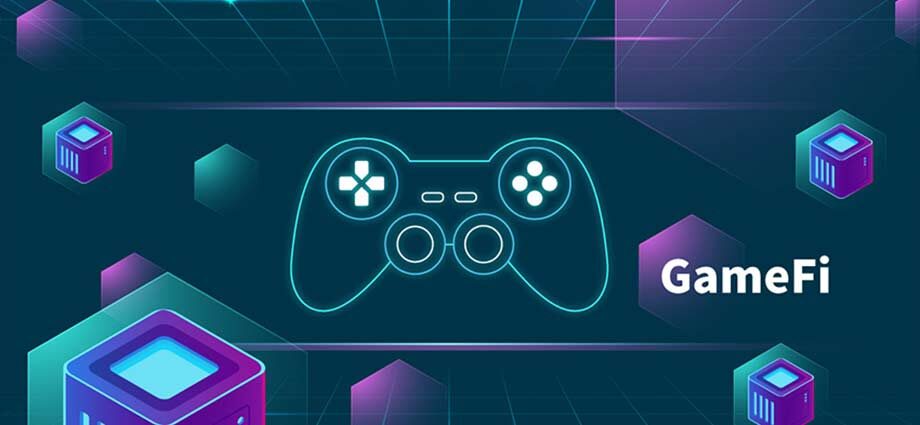This year GameFI
As of my knowledge cutoff, GameFi is a relatively new concept and its implementation is still in the early stages. In this year, we can expect to see some initial GameFi games and platforms being released, but the adoption and development of GameFi is likely to be gradual and evolve over time. Some of the key features that we can expect from this year’s GameFi include:
- In-game economies powered by blockchain: GameFi games will use blockchain technology to create in-game economies where players can buy, sell, and trade digital assets in a secure and transparent way.
- True item ownership: Players will have true ownership of their in-game assets and will be able to transfer or sell them outside of the game.
- Secure micropayments: GameFi will enable secure and transparent micropayments, making it easier for players to purchase in-game items or make other transactions.
- Decentralized gaming: GameFi games will be more decentralized, allowing players to have more control over the game and its economy.
- Interoperability: GameFi games may be able to connect with other games, platforms, and marketplaces, creating a more connected gaming ecosystem.
It is important to note that GameFi is still in its early stages, and the above features may not be present in all GameFi games and platforms. As the technology and the ecosystem around it matures, we can expect to see more games and platforms incorporating these features.
About GameFI
GameFi is a term that refers to the integration of blockchain technology into the gaming industry. This can include using blockchain to power in-game economies, allowing players to trade and own digital assets, and using smart contracts to facilitate secure and transparent transactions. The goal of GameFi is to create a more decentralized and player-driven gaming experience.
How to play GameFi
Playing a GameFi game will depend on the specific game and how it has implemented blockchain technology. However, in general, you may need to do the following steps to play a GameFi game:
- Get a digital wallet: To participate in a GameFi game, you will need a digital wallet that supports the cryptocurrency or token used in the game.
- Purchase or earn in-game currency: You will need to acquire the in-game currency, which is typically a cryptocurrency or token, to participate in the game’s economy and make transactions. This can be done by purchasing the currency on an exchange or earning it through in-game activities.
- Download and install the game: Once you have the necessary digital wallet and in-game currency, you can download and install the GameFi game on your device.
- Connect your wallet to the game: You will need to connect your digital wallet to the game to access your in-game currency and make transactions.
- Play the game: Once you have set up your wallet and acquired the necessary in-game currency, you can start playing the game. The exact gameplay will depend on the specific game, but you may be able to use your in-game currency to buy and sell digital assets, participate in in-game markets, and more.
Note that some games may have different requirements or steps to play. Be sure to check the game’s website or documentation for specific instructions.
GameFI Blockchain Future
Blockchain technology has the potential to revolutionize the gaming industry by creating a more decentralized and player-driven experience. Here are a few ways that blockchain technology could shape the future of GameFi:
- Decentralized economies: Blockchain-based in-game economies could allow players to buy, sell, and trade digital assets in a secure and transparent way, creating a more dynamic and player-driven economy.
- True item ownership: With blockchain-based assets, players could truly own the digital items they acquire in-game, and have the ability to transfer or sell them outside of the game.
- Secure micropayments: Blockchain technology could enable secure and transparent micropayments, making it easier for players to purchase in-game items or make other transactions.
- Anti-cheat and anti-fraud measures: Blockchain’s immutability and transparency could be used to create tamper-proof records of in-game activities, making it more difficult for cheaters to manipulate the game.
- Interoperability: By using blockchain technology, GameFi games could become more interoperable, allowing players to easily transfer assets and progress between different games, creating a more connected gaming ecosystem.
- NFTs – Non-Fungible Tokens: In the future, game developers may use Non-Fungible Tokens (NFTs) to represent in-game items, this will give the players the ability to prove the authenticity and ownership of their in-game assets, and also open a new market for in-game items, similar to how CryptoKitties work.
- VR/AR integration: GameFi blockchain technology could also be used to enhance virtual reality and augmented reality experiences by creating secure and transparent ways for players to interact with digital assets and make transactions in these immersive environments.
Overall, it’s an exciting time for the gaming industry and the integration of blockchain technology has the potential to create new and innovative gaming experiences for players.
It’s difficult to predict exactly what the future of GameFi will look like in 2024, as it will depend on many factors such as the progress of blockchain technology and the adoption of GameFi by both developers and players. However, here are a few possibilities for how GameFi might evolve in the future:
- Increased adoption by game developers: As more developers become familiar with blockchain technology and its potential benefits for gaming, we may see more GameFi games being created and released in the future.
- Improved player experiences: With more games integrating blockchain technology, players may experience more immersive and player-driven gameplay, as well as increased ownership and control over their in-game assets.
- New use cases for blockchain in gaming: As the technology matures, developers may find new and innovative ways to use blockchain in gaming, such as creating decentralized gaming communities or using blockchain to enhance in-game security.
- Greater mainstream acceptance: As blockchain technology and GameFi become more widely accepted, we may see more mainstream adoption of GameFi games and platforms.
- Improved scalability: Blockchain technology is continuously improving and this will enable GameFi games to handle more players, transactions, and assets, allowing for even more immersive and engaging gaming experiences.
- Interoperability: GameFi games and platforms may become more interoperable, allowing players to easily transfer assets and progress between different games, and creating a more connected gaming ecosystem.
Keep in mind that these are just possibilities and the future of GameFi may be different from what is expected but it’s an exciting time for the industry and it will be interesting to see how it evolves in the coming years.











